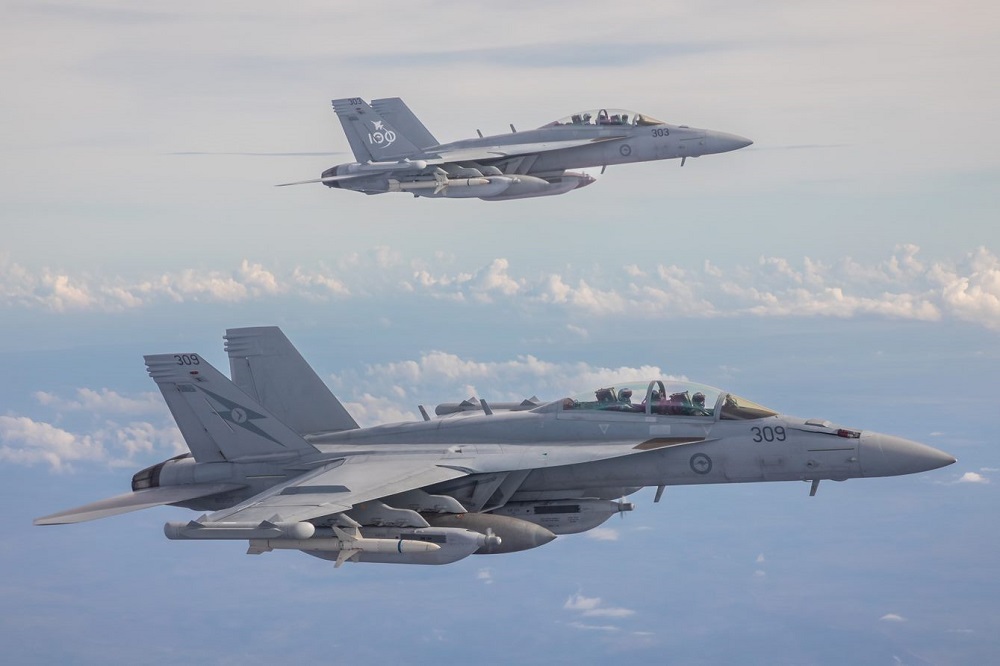
The defence strategic review gives the clearest description yet of the perilous strategic circumstances in which we are living. It is not based on distant future scenarios but on the reality of the threats from authoritarian and revisionist regimes.
Beijing’s objective is to be so militarily and technologically powerful that no other nation has the confidence to challenge its behaviour. Moscow’s invasion of Ukraine, meanwhile, has shown what happens when countries allow their military capabilities to lag and thereby lose the power to deter aggression.
That is the urgent context in which this document was commissioned and written. This is not a moment in which our military planners and politicians have the luxury of time to stay ahead of the next generation of threats. We are already facing them.
Hence the wholesale re-examination of what we want our military to do. The ambition set is a high one: to protect our way of life and make sure we are able to make sovereign decisions, rather than have ‘our fate determined by others’.
Putting Australia on the best footing means reshaping the ADF away from being structured to do a bit of everything, and instead focusing it on the main game—deterrence.
Beijing is carrying out the largest military buildup since World War II—without transparency or any kind of diplomatic assurances. It has supercharged its technological capabilities through intellectual property theft and huge investment in military-relevant research and development.
The ADF therefore needs to help deter Beijing from aggression by persuading it that the costs incurred would be too high.
The review sets out some crucial goals. We need to become more self-reliant so that we are able to make a greater contribution to regional stability, particularly by investing in advanced technologies. At the same time, we need to build stronger partnerships with countries that share our vision for an open and sovereign region that is strategically balanced, not dominated by a single power.
Self-reliance and partnerships may at first seem contradictory but they are two sides of the same coin. More self-reliance—in the sense that Prime Minister Anthony Albanese and Deputy Prime Minister Richard Marles used the phrase when they announced the review—does not mean self-sufficiency. It doesn’t mean going it alone.
It means making ourselves stronger, more capable and better able to defend Australia and contribute to regional stability. Continuing to strengthen our most trusted partnerships helps us increase our own security and sovereignty, rather than undermining our independence. AUKUS, for example, is a partnership that will enable Australia to acquire better submarines to defend ourselves and the region. Without AUKUS, we would still acquire (conventional) submarines but we would actually be more reliant on the US to protect us from an adversary with a capability superior to ours.
We need to become more self-reliant not because the US is a fading power, as some commentators claim (or in many cases, hope). Indeed, the review stresses that the US alliance is becoming even more important to Australia.
But for the first time since the Soviet Union collapsed, the US is being challenged, which is why Australia must become a more active contributor to the stability we seek. The US will remain the indispensable Indo-Pacific power among countries that want to see an open and stable region not dominated by Beijing, but it can’t provide a strategic balance by itself. A stable balance of power will take an effort by all—as Foreign Minister Penny Wong said last week at the National Press Club.
Monday’s review sets a pathway to reshape the ADF to contribute to that balance.
The review’s success will hinge on implementation, which has been a failing for previous strategies, including the widely applauded 2009 white paper. Helpfully, the review sets out a new discipline known as ‘net assessment’, which will analyse key trends, risks, opportunities and competitors.
The review did not try to answer every question at once. It has clearly identified priorities for immediate action, and the many areas where further work is needed. Through a new biennial process, the DSR establishes a cadence in Australian national defence strategy that enables both evolution and revolution, depending on the assessment of the need. This reflects a requirement for governments and Defence to do two things at once—long term strategy focused on future sovereignty with the agility to adapt as the facts change.
Some might say the decision to keep the current defence spending trajectory over the four-year forward estimates period fails to reflect the necessary urgency. It is welcome that the review emphasises that spending will need to rise over the decade. However, resourcing will need to be watched carefully over the shorter time frame as global events play out.

